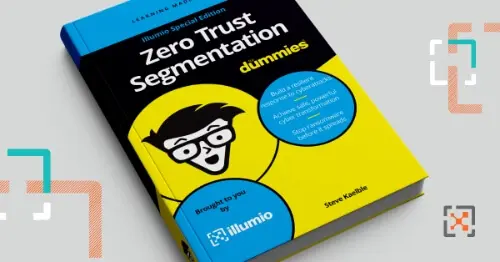Zero Trust - The security paradigm for the modern organization
Illumio delivers a foundational component of any Zero Trust architecture – Zero Trust Segmentation


What is Zero Trust?
The attack surface is expanding and threat actors are getting increasingly sophisticated and targeted, with breaches ever more catastrophic.
Detection, response, and recovery are no longer sufficient - containment is essential.
Effective containment begins with an "assume breach" mindset which, in turn, drives a least-privilege approach to building security controls — this is Zero Trust.
Why Zero Trust now?
Accelerated adoption of digital services needs a security approach that is equally as agile.
Hyperconnectivity means that a single compromise can test the cyber resilience of the entire organization.
Business transformation makes an "assume trust" model obsolete.
The benefits of Zero Trust
An assume breach mindset is imperative as the attack surface expands. Build a Zero Trust model and contain breaches with segmentation.
- $20million
$20 million saved in app downtime
- 5
5 cyber disasters averted
- 14
14 digital transformation projects accelerated
An “assume breach” mentality delivers modern security
Starting with the premise that the unexpected can happen at any time drives the following behaviors
Visibility everywhere
to ensure that every interaction on the network is accounted for
Least-privilege access
to prevent unexpected breaches from propagating
Adaptability and consistency
to guarantee consistent network behavior everywhere
A proactive posture
to always be on the lookout for an attack
These are the principles of Zero Trust security and are essential in supporting modern business needs.
What is a Zero Trust architecture?
NIST defines the following tenets for any Zero Trust architecture:
- Everything (data, users, devices, etc.) is considered to be a resource
- All communications are secured regardless of location
- Access to individual resources is granted on a per-session basis
- Access to resources is governed by dynamic policy
- Integrity and security posture of all enterprise-owned assets are monitored
- Authentication and authorization are strictly enforced before access is granted
- Constantly monitor the state and activity of resources to improve their security posture
Zero Trust Segmentation applies these tenets by:
Continually visualizing how workloads and devices are communicating
Creating granular policies that only allow wanted and necessary communication
Automatically isolating breaches by restricting lateral movement proactively or during an active attack
How Illumio helps
See and understand risk
Understand relationships and communications to map exposure risk of systems and data
Establish the right protection
Identify the right security posture and secure applications through least privilege policies
Respond to changes
Ensure Zero Trust security posture adapts to changes in your environment to maintain the least privilege state














